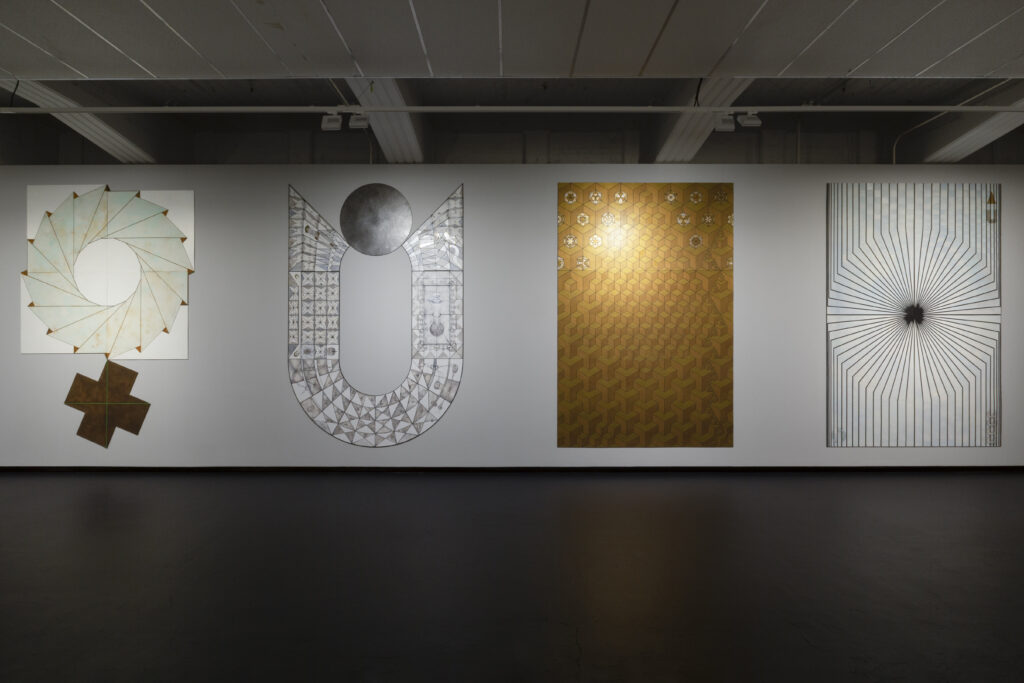Julia Morison has spent fifty years investigating the power that artistic forms and materials hold to convey symbolic meaning. She frequently works within self-imposed parameters, whether numerical, material or organisational. Much of her artistic exploration probes into the ways that meaning can be shaped and reconfigured through the use of ten symbolic materials, from clay and ash, to silver and gold. Fascinated by the ways that we systematise our understanding of the world around us, Morison draws on a range of knowledge systems, from the arcane to the modern.
Ode to Hilma presents ten large-scale paintings which expand these central concerns. Made in extended response to the work of Hilma af Klint – specifically to the set of ten paintings collectively referred to as ‘the ten largest’ – these paintings measure a monumental 3.6 x 2.4 meters. Morison explains that her interest in af Klint lies ‘in the search for spiritual symbolism as a shared language. More importantly, I share her interest in the traditional structures and myths that we use that may be part of our collective unconscious or DNA memory.’
This ambitious new suite of paintings will be presented alongside the 2022 work Vademecum II. Vademecum, a Latin word, refers to a guide or book, which can be carried around and easily consulted. Morison’s Vademecum is comprised of 100 pages, which can be reconfigured according to a range of organisational logics. Like her wider practice, this ‘guide’ is at once highly systematised and infinitely mutable.
By staging this exhibition in the same gallery space that af Klint’s ‘ten largest’ were exhibited in 2021-22, Ode to Hilma invites a consideration of thematic resonances between these two distinctive artists.





























































